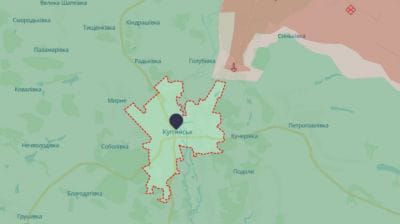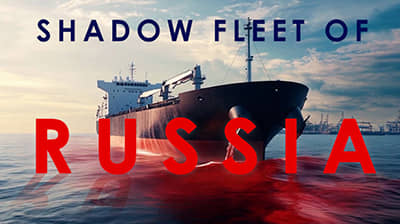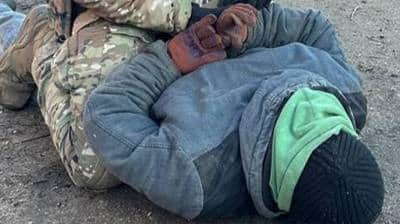A Ukrainian military helicopter crew talks about their service
The Ukrainian soldiers who work on Mi-8 helicopters are true professionals in their field. They have come under Russian attack numerous times as they protect Ukraine.
The commander and the machine gunner of one crew talk about their work and its challenges, and a pilot of the Armed Forces of Ukraine answers a question that’s frequently asked by civilians, in a video posted by the Ukrainian Witness project.
The Mi-8 is a multi-target helicopter which can be used to attack Russian troops and strongholds, to transport weapons, evacuate the wounded, etc.
The commander of the helicopter crew showed an attack in action: this is the so-called "positive pitch", the launch of non-guided missiles in the front contact line.
"We are like the artillery. The only difference is that the artillery takes a stationary position and launches an attack, while we do it in motion," the commander explains.

The crew commander is on his fifth rotation already. He does not mention how many flights he has been on, but remarks that at the beginning of the full-scale Russian invasion of Ukraine, they were more frequent.
During the 14 months of the full-scale war, these servicemen have fought on the Kherson, Zaporizhzhia, Donetsk and Kharkiv fronts, and participated in battles near the settlements of Lysychansk, Bakhmut and Soledar.
"As pilots we are good at manoeuvring. We can be sent anywhere. Any pilot will share the very extensive geography of their flights with you," he says.

A combat Mi-8 gunner told Ukrainian Witness that he has survived 11 missile attacks and many mortar and artillery attacks. He says he loves his job and believes that when you are scared, you should laugh.
"You can’t lose heart during a war," he said. He advises all pilots to learn as much as possible, as it helps them to live longer.
A 28-year-old pilot of the Armed Forces of Ukraine revealed why pilots wear leather jackets.
"We carry large quantities of aircraft fuel on board, kerosene. If there’s an accident or a missile strike, the helicopter turns into a flammable barrel, and if you have to land and run out, your uniform starts melting.
So we wear gloves made of a special non-combustible material, leather jackets, and balaclavas," he explains.

A machine-gunner from the helicopter crew also talked about his job.
"At the beginning of the [full-scale] war, when there was no front line yet, we were repelling Russian columns. It went like this: you see equipment with ‘Z’ on it – you fire." [Since the beginning of the full-scale war, the Russians have been marking their military equipment with the letters "Z" and "V" – ed.]
This took place in Mykolaiv Oblast, as that is where the crew was deployed at the time.
"Now that the front line is distinct, and the troops are deployed along this line, my task is to report to the crew commander about any change in the situation," the machine-gunner adds.

Sometimes a helicopter would be ambushed. There would be bullet holes in the fuselage and damage to the blades and the gearbox.
"I was covering the retreat then. It seemed like everything was in slow motion. I realised I needed to get through this moment and survive, because I am responsible for the crew. I shot 250 cartridges then. That’s enough for 20 seconds of covering fire, just enough to retreat a kilometre and hide," the commander says, recalling one of his previous battles.
Finally, he sent his greetings to the Ukrainian infantry.
"They are people of steel… We will do everything possible to deter the Russians and support our infantry. We are beyond proud of them," he said.
Journalists fight on their own frontline. Support Ukrainska Pravda or become our patron!





